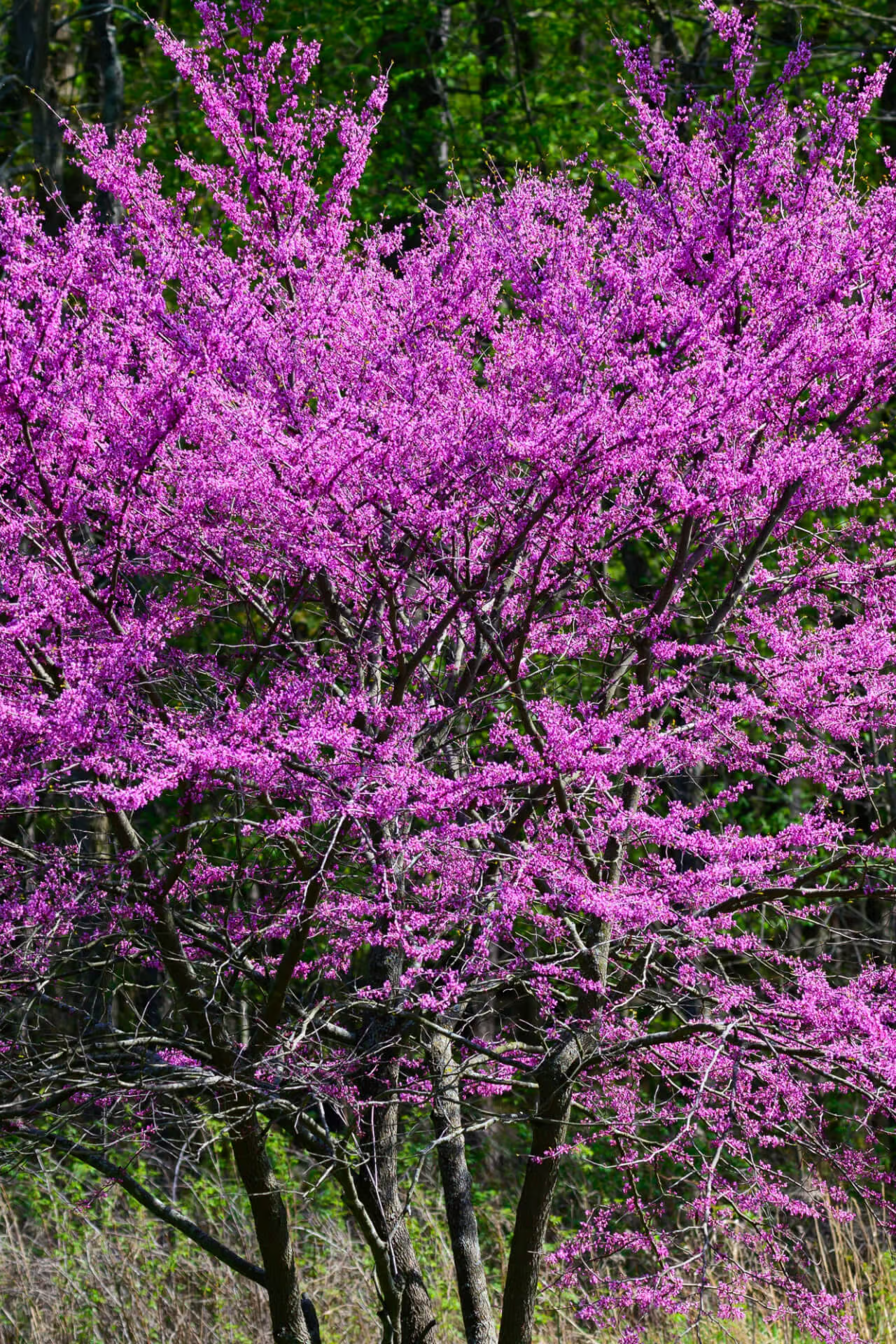




Redbud Tree
Beautiful, vibrant springtime blooms
Great for small and medium spaces
Provides stunning fall foliage color
Thrives in
ZONE 4ZONE 5ZONE 6ZONE 7ZONE 8ZONE 9This plant ships:
Ships 7-10 Days1 Year Guarantee on all plants
Redbud Tree - Cercis canadensis
The Redbud Tree (Cercis canadensis) is a stunning deciduous tree that will become the focal point of your garden or landscape, with tiny purple flowers that dot the branches in spring.
Plant Details - Redbud Tree
Family: Fabaceae
Light Requirement: Full Sun
Water Needs: Moist
Height: 15 - 35 ft.
Spread: 20 - 35 ft.
Growth Rate: Slow
Bloom Time: Spring
Flower Color: Purple
Wildlife Value: Attracts bees
Landscape Uses and Maintenance – Redbud Tree
The Redbud Tree is a native tree with heart shaped leaves and tiny flowers that uniquely bloom straight out of the bark. This is a beloved tree that will be a great addition to your landscape.
It is a great choice for a border, front yard, or edge of a meadow. Excellent in the landscape or as an understory tree.
Give this tree full sun to partial shade. For the best flower set plant in full sun.
Plant in an area with well draining soil. It can handle sandy or clay soil. Avoid planting in compacted soil.
Water this tree deeply until established and during times of drought. When watering take care not to overwater, as this can lead to root rot.
This is a low maintenance tree that does not need fertilizer.
Prune branches of this tree as needed, such as if you notice crossing branches that rub, to prevent fungal issues. This tree can also be pruned to keep it a shorter, more manageable height.
Deer resistant.
This tree will attract plenty of hungry pollinators, including bumblebees and solitary bees. It attracts Swallowtail butterflies and is the host plant to Henry’s Elfin butterfly.
This tree is easily propagated by its peapod like seeds, and saplings are likely to sprout around its base.
It will look great with other native plants underneath, including Wild Ginger, Bloodroot, and Virginia bluebells.
Noteworthy Characteristics
Unlike many other trees that would decline, the Redbud Tree is a tree that can handle being planted near Black Walnut.
Love this tree but looking for another color to have in your garden? Some varieties are white, pink, or purple. Collect them all!
This Is How Your Plants Will Look upon Delivery

Bloom Season
Spring
Bloom/Foliage Color
Pink
Height at Maturity
Over 25 Feet
Care
Redbud trees prefer well-drained soil and benefit from regular watering, specifically during dry times. They should be trimmed to retain shape and clear dead limbs. In early spring, they should be fertilized. They are relatively low-maintenance and resistant to pests.
Plant Reproduction
Redbud Tree spreads by seed dispersal and root suckering.
Plant bare root trees during the dormant season in early spring or late fall (November through April). Dig the hole twice as wide as the roots so the soil is well-drained. Position the tree so the root flare is at or just above ground level. Fill the hole back with the soil you dug from and water. Maintain soil moisture, especially in the tree's early years, by providing deep, regular watering. Apply a 2-4 inch mulch away from the trunk at the base to retain moisture and suppress weeds. Prune trees during the first few seasons to establish strength and resilience, remove damaged branches, and continue maintenance pruning as the tree matures. Regularly inspect for pests and diseases and apply integrated pest management practices. Protect young trees from mechanical damage and extreme temperatures with tree guards, and stake them if necessary for support, removing the stakes after one or two years.
Shipping date depends on the date displayed and chosen when you order from the product's page.
We only accept returns on plants verified dead. If you think your plants have died, we offer a 1 year warranty, please use this File a Claim Link to verify dead plants and start with return warranty process.







Beautiful Spring Blooms:
Delicate purple-lilac flowers in early spring create a stunning display.
Heart-Shaped Leaves:
Leaves change from red to green, then to fall colors of yellow and orange.
Graceful Multi-Trunk Structure:
Spreading branches and multiple trunks enhance garden texture and appeal.
Unique Cauliflory:
Flowers can bloom along limbs and trunk, adding visual interest.
Caring Tips
How do I care for my Redbud Tree?
Each box contains detailed care instructions and information about your product. But here's the basics.
Care Tips
Redbud trees prefer well-drained soil and benefit from regular watering, specifically during dry times. They should be trimmed to retain shape and clear dead limbs. In early spring, they should be fertilized. They are relatively low-maintenance and resistant to pests.
Light Requirements
The Redbud Tree flourishes in complete sun to shade. For best growth and flowering, it favors 4 to 6 hours of total sunlight daily. In hotter climates, some afternoon shade can help prevent leaf scorch.
Hardy Planting Zones
4 • 5 • 6 • 7 • 8 • 9
Header
Use this content to share information about your store and products.
Frequently Asked Questions
How often should I water my plants?
How do I know if my plant is getting too much or too little sunlight?
What should I do to prepare my plants for winter?
What are the signs that my plant needs fertilizing?
How can I prevent pests from damaging my plants?
How do I choose the right plant for my climate zone?






